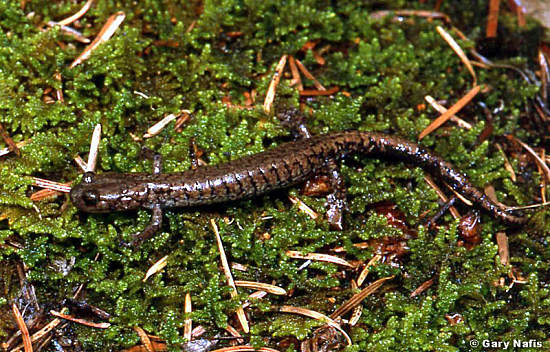
As has been noted frequently, a lot of what we know isn't so. This is doubly so in the biological world, for exceptions to common knowledge abound. For example, most people learn that amphibians hatch out as pollywogs in ponds and streams and then metamorphose into adults by losing their gills and tail fins while developing lungs and legs. And for most amphibians, this is true--but there are fascinating exceptions. One of these is the axolotl, a salamander originally inhabiting lakes near Mexico City. This amphibian, a close relative of creatures that act as we think salamanders should, remains aquatic throughout its life. It's basically an overgrown tadpole with legs and adult reproduction, but preserving most larval characteristics.
Closer to home, high in the mountain ranges east of our Chihuahuan
Desert's Tularosa Basin, the Sacramento Mountains Salamander defies the salamander
code not only by never developing lungs, but by not even laying its eggs in water. As
long as damp habitats aren't lost from the mixed coniferous forests, these small
salamanders will handle their own losses quite well. 
Contributor: Arthur H. Harris, Laboratory for Environmental Biology, Centennial Museum, University of Texas at El Paso.
Desert Diary is a joint production of the Centennial Museum and KTEP National Public Radio at the University of Texas at El Paso.

Sacramento Mountains Salamander (Aneides hardii). Photograph courtesy of Gary Nafis.
CaliforniaHerps, Sacramento Mountains Salamander.